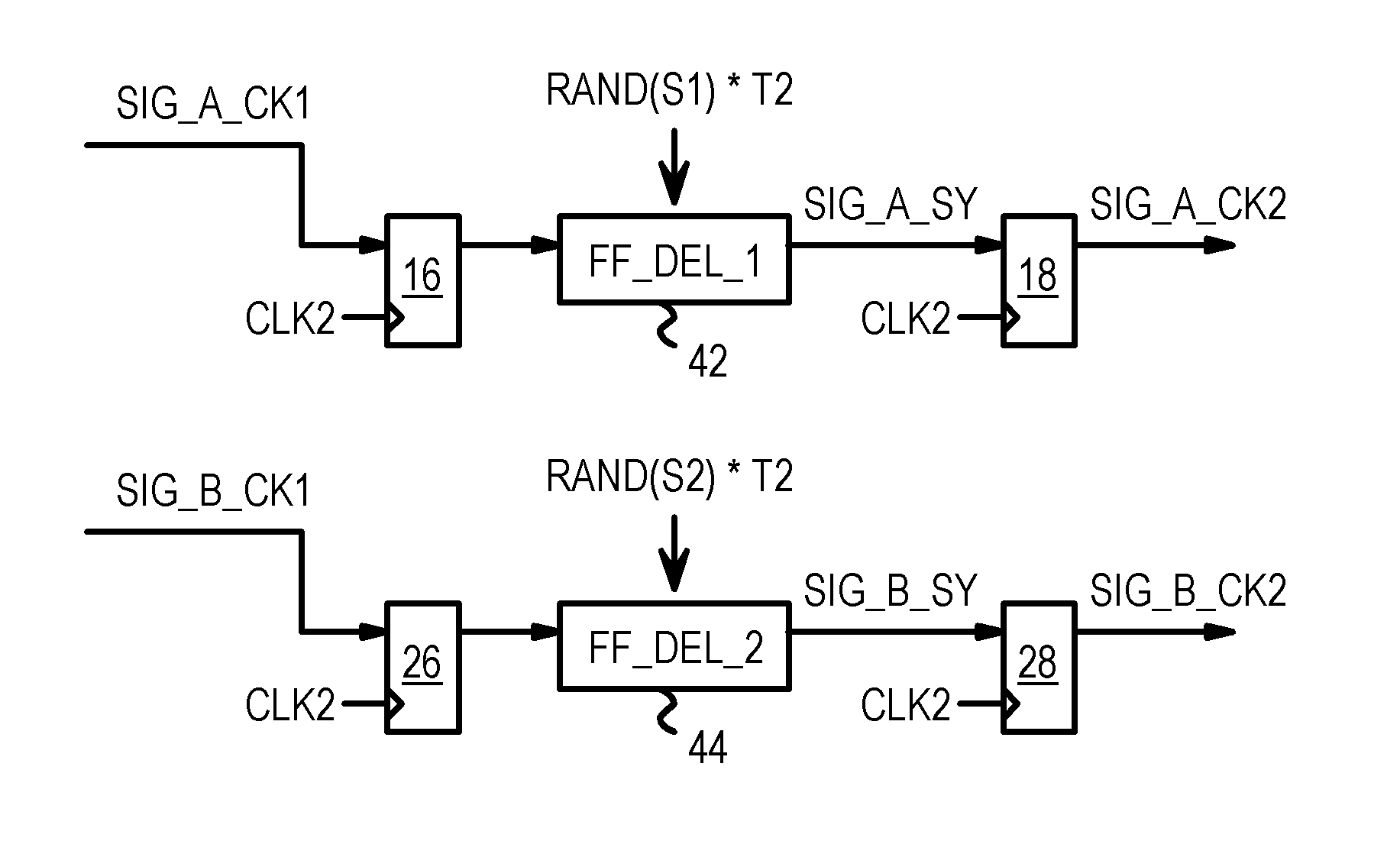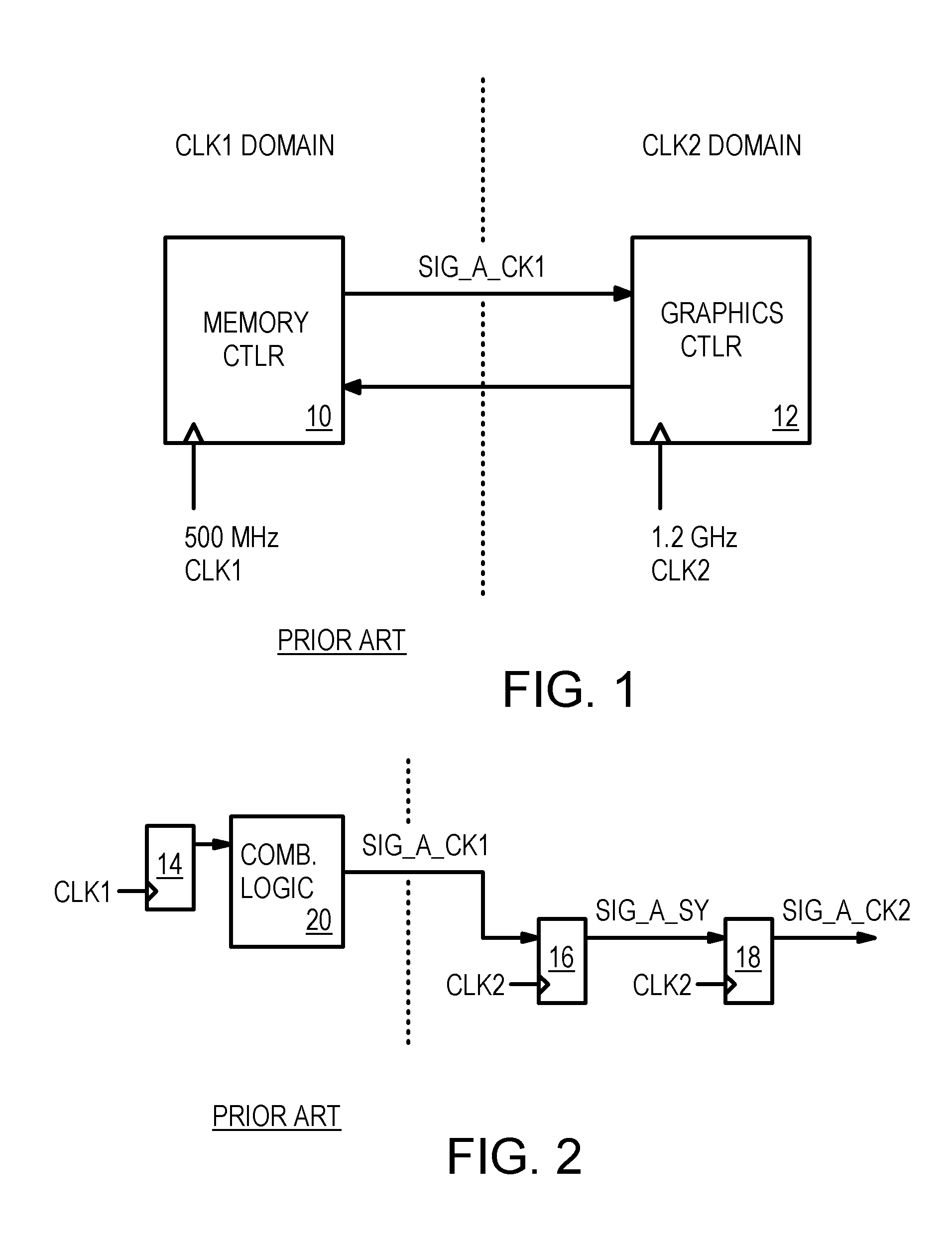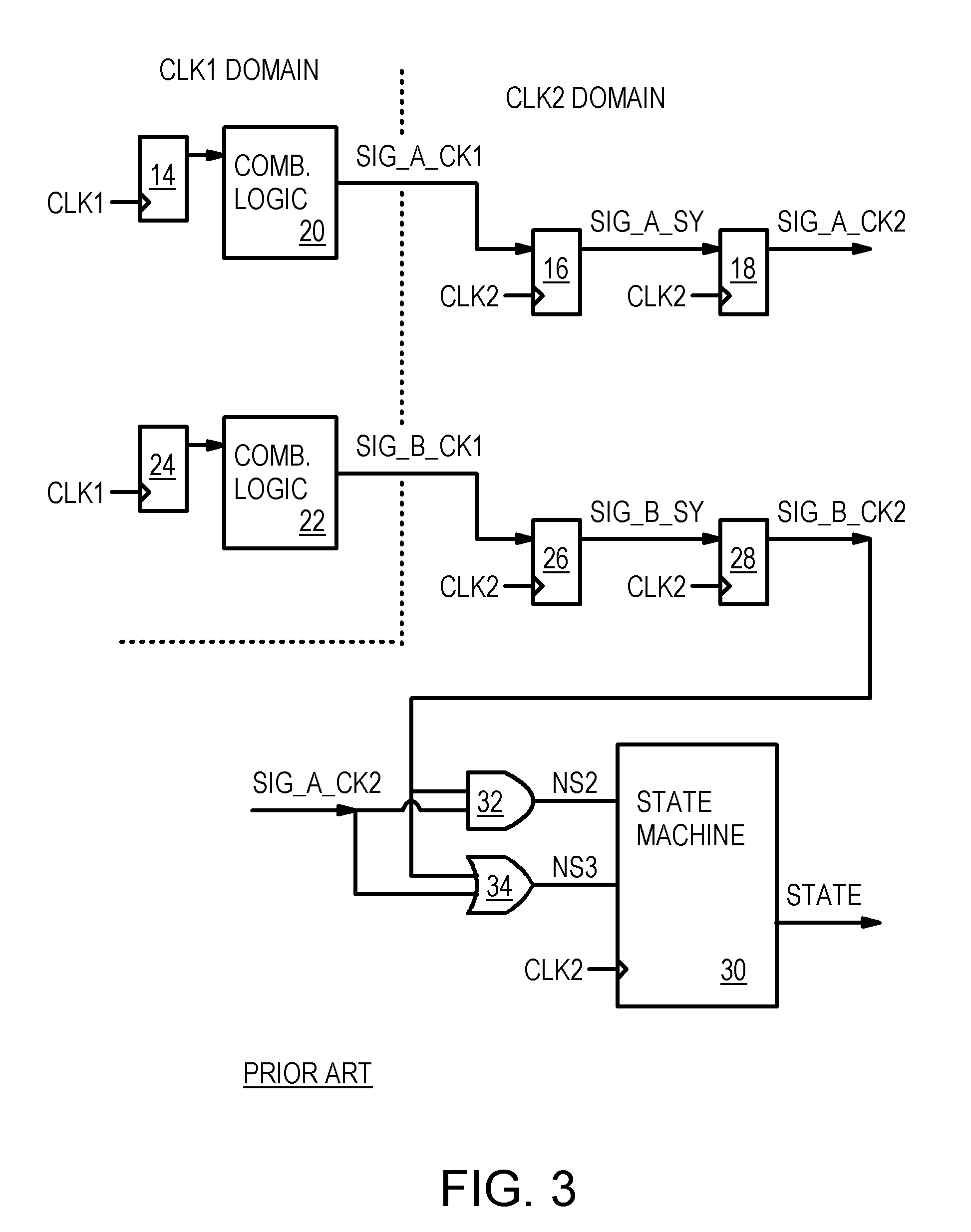Methodology for verifying multi-cycle and clock-domain-crossing logic using random flip-flop delays
a random flip-flop delay and logic verification technology, applied in the field of timing verifiers, can solve problems such as metastability and system failures, other problems can still occur with domain-crossing signals, and difficulty in confirming larger designs
- Summary
- Abstract
- Description
- Claims
- Application Information
AI Technical Summary
Problems solved by technology
Method used
Image
Examples
Embodiment Construction
[0044]The present invention relates to an improvement in logic or timing verifiers. The following description is presented to enable one of ordinary skill in the art to make and use the invention as provided in the context of a particular application and its requirements. Various modifications to the preferred embodiment will be apparent to those with skill in the art, and the general principles defined herein may be applied to other embodiments. Therefore, the present invention is not intended to be limited to the particular embodiments shown and described, but is to be accorded the widest scope consistent with the principles and novel features herein disclosed.
[0045]The inventor has realized that logic hazards can exist when domain-crossing signals are re-combined in the new domain. Synchronizers can prevent metastability on domain-crossing signals, but cannot prevent the combinatorial logic hazards.
[0046]The inventor further realizes that random delays can be added to the synchro...
PUM
 Login to View More
Login to View More Abstract
Description
Claims
Application Information
 Login to View More
Login to View More - R&D
- Intellectual Property
- Life Sciences
- Materials
- Tech Scout
- Unparalleled Data Quality
- Higher Quality Content
- 60% Fewer Hallucinations
Browse by: Latest US Patents, China's latest patents, Technical Efficacy Thesaurus, Application Domain, Technology Topic, Popular Technical Reports.
© 2025 PatSnap. All rights reserved.Legal|Privacy policy|Modern Slavery Act Transparency Statement|Sitemap|About US| Contact US: help@patsnap.com



